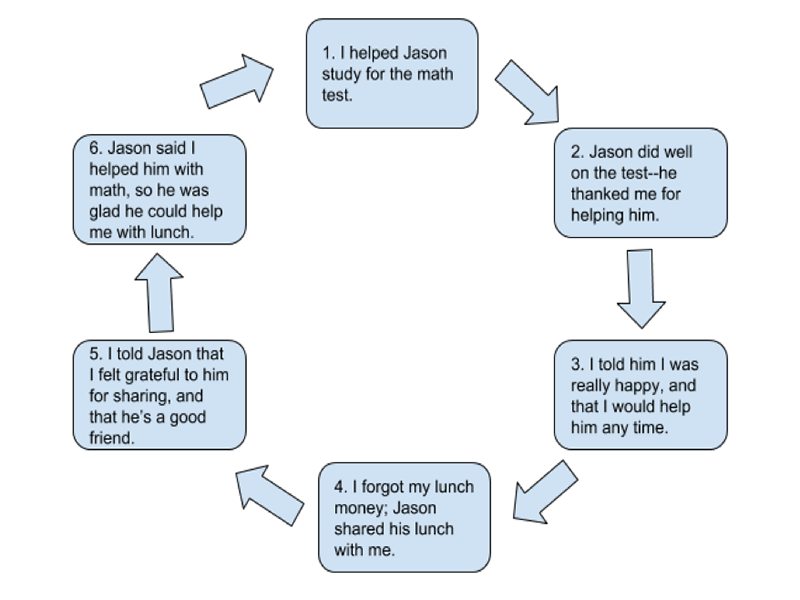
The Cycle of Gratitude
Students create a gratitude cycle, demonstrating that the positive emotions that come from gratitude keep on giving.

Students create a gratitude cycle, demonstrating that the positive emotions that come from gratitude keep on giving.
Students will:
Take a moment to reflect on your own cycle of gratitude. Think of someone for whom you did something kind. How did it feel? Did this person express gratitude to you? How did it feel to receive their gratitude? Did you do something else kind or caring as a result? Think of these positive feelings as forming a cycle of giving that keeps going.



“Nurturing Gratitude From the Inside Out: 30 Activities for Grades K–8” was originally developed by The Inner Resilience Program, in partnership with the Greater Good Science Center and the John Templeton Foundation.
For the entire curriculum, click here.
Do you notice whether students are expressing more kindness or gratitude towards each other after doing this practice?
Numerous studies have found that gratitude makes adults “pay it forward”: Grateful people are more helpful, altruistic, and compassionate—in other words, more prosocial.
In addition to its benefits for adults, research suggests that gratitude is also good for youth, going hand in hand with greater hope and optimism, higher satisfaction with life, and fewer health complaints.
Students who experience greater positive emotions may put in more effort to overcome obstacles, engage in classroom activities more, and be less stressed at school. In addition, positive mental health in childhood is linked to educational achievement and professional success later in life.

Are you ready to build a kinder, happier school where everyone belongs? Join Greater Good Educators! Explore the science of well-being in a supportive community of educators from around the world. Registration is now open for the 2025-2026 school year!
Comments